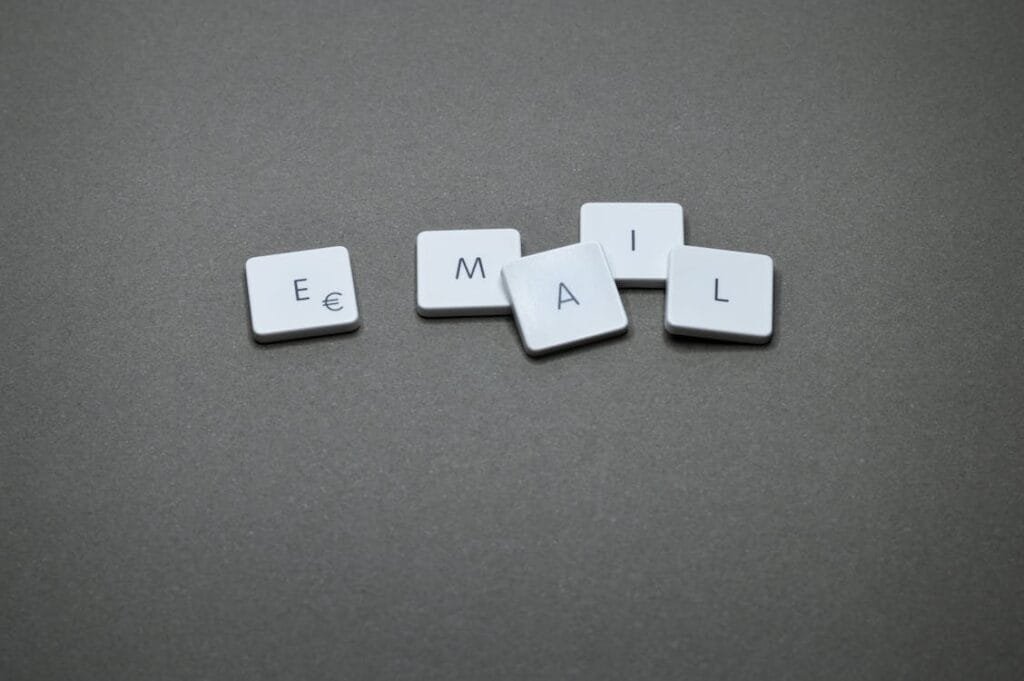Welcome to an in-depth exploration of two of the most prominent players in the email marketing arena: AWeber and HubSpot Email Marketing. As we step into 2024, the email marketing landscape continues to evolve, making the choice of the right tool more crucial than ever. This comprehensive guide is designed to unravel the nuances of AWeber and HubSpot, helping you make an informed decision for your email marketing needs. Let’s dive into a key area of comparison
Automation Capabilities: Crafting the Future of Email Marketing
The Simplified Efficiency of AWeber’s Automation
AWeber has built a reputation for providing straightforward and efficient automation tools that cater well to small businesses and individual entrepreneurs. The platform focuses on making email automation accessible and easy to use. With AWeber, you can effortlessly set up automated email sequences, a feature that is particularly appealing to those who are new to the world of email marketing or those who value simplicity in their marketing tools.
The platform offers a suite of pre-designed automation templates which you can quickly adapt to your campaigns. This is especially useful for time-strapped marketers who want to get their campaigns up and running without delving into complex configurations. AWeber’s automation tools, while not the most advanced in the market, effectively cover essential aspects like subscriber segmentation and personalized email journeys based on user actions.
However, for businesses or marketers looking for more intricate automation paths, AWeber’s offerings might seem somewhat basic. The platform is excellent for foundational email marketing strategies but may not fully satisfy those who need highly advanced automation features.
HubSpot Email Marketing’s Advanced Automation Suite
HubSpot Email Marketing, part of the comprehensive HubSpot ecosystem, takes automation to a more sophisticated level. Its automation capabilities are designed for businesses looking for a more dynamic and integrated approach to email marketing. HubSpot’s strength lies in its ability to create complex and highly personalized automation workflows that are deeply integrated with its CRM system.
This integration with the CRM allows for nuanced segmentation and targeting, enabling marketers to craft email campaigns that resonate closely with their audience’s needs and behaviors. HubSpot also offers advanced features like lead scoring and detailed behavioral triggers, which are essential for creating highly targeted and effective email marketing campaigns.
The platform’s automation capabilities are not just about sending emails; they are about nurturing leads, guiding them through the sales funnel, and providing valuable insights into customer behaviors. This makes HubSpot an ideal choice for businesses that are looking for a robust, all-encompassing email marketing solution.
However, the advanced nature of HubSpot’s email marketing automation comes with a higher learning curve. It’s most suitable for businesses that already have a grasp of basic email marketing strategies and are looking to leverage more sophisticated and integrated marketing approaches.
Pricing Structures: Balancing Cost and Value in Email Marketing
When it comes to selecting the right email marketing tool, understanding the pricing structure is as crucial as assessing the features. Both AWeber and HubSpot Email Marketing offer distinct pricing models, each catering to different market segments and business needs. Let’s examine how these two platforms stack up in terms of pricing and what they offer for the cost.
AWeber
- Free Plan: For up to 500 subscribers, offering basic features like email templates and automation.
- Pro Plan: Pricing starts at $19.99/month for up to 500 subscribers and increases with the number of subscribers. Includes advanced features like split testing, behavioral automation, and detailed reporting.
HubSpot Email Marketing
- HubSpot’s email marketing tool is part of the HubSpot Marketing Hub, which offers the following plans:
- Free Tools: Basic email marketing features with HubSpot branding.
- Starter Plan: Starting at $45/month, includes email marketing, ad management, landing pages, forms, and more.
- Professional Plan: Starting at $800/month, offers advanced marketing automation, smart content, and A/B testing.
- Enterprise Plan: Starting at $3,200/month, adds features like adaptive testing, advanced reporting, and custom event triggers.
AWeber’s Pricing: Affordability for Small Businesses and Entrepreneurs
AWeber has positioned itself as a budget-friendly option in the email marketing space, particularly appealing to small businesses, startups, and individual entrepreneurs. The platform offers a free plan, which is a great starting point for those new to email marketing or operating on a tight budget. This plan includes a range of basic features, making it a practical choice for getting started without financial commitments.
As your needs grow, AWeber offers a straightforward, tiered pricing model based on the number of subscribers. This scalability is beneficial as it allows businesses to predict and plan their expenses as they grow. The transparent pricing model of AWeber means that you get access to all the features within your plan without worrying about hidden costs or upsells.
However, as your subscriber list expands, the costs can escalate, and for businesses with a large number of subscribers, AWeber can become a considerable monthly expense. Thus, it’s important for growing businesses to consider how the increasing costs align with their marketing budgets and ROI.
HubSpot Email Marketing’s Pricing: Comprehensive Solutions for Growing Businesses
HubSpot Email Marketing, being part of the larger HubSpot suite, offers a pricing model that reflects its comprehensive and integrated approach. The platform is geared more towards medium to large businesses or those with more complex marketing needs. HubSpot’s pricing starts with a free plan, which includes basic features suitable for small-scale marketing efforts.
As you move up the pricing tiers, you gain access to more advanced features, including deeper CRM integration, advanced segmentation, and detailed analytics. These features are particularly valuable for businesses looking to implement sophisticated, data-driven marketing strategies. The higher-tier plans of HubSpot are designed for larger organizations that require a full suite of marketing tools and are willing to invest in a comprehensive solution.
While HubSpot offers a robust set of features, its pricing can be on the higher side, especially as you explore plans that include the full capabilities of the HubSpot ecosystem. For small businesses or those with limited budgets, the cost of HubSpot’s higher-tier plans can be a significant consideration.

Related: Check out our free SEO suite

User Interface and Ease of Use: Navigating the Email Marketing Landscape
The user interface and overall ease of use of an email marketing tool are crucial factors that can significantly influence your marketing efficiency and experience. Let’s take a closer look at how AWeber and HubSpot Email Marketing compare in terms of their user interfaces and usability.
AWeber’s User-Friendly Interface: Simplifying Email Marketing
AWeber has long been appreciated for its user-friendly interface, making it an excellent choice for those new to email marketing or who prefer simplicity in their tools. The platform’s design focuses on straightforward navigation, allowing users to easily access various features without feeling overwhelmed. Here’s what makes AWeber’s UI stand out:
- Intuitive Design: AWeber’s dashboard is designed to be clean and intuitive, offering a hassle-free experience for users to create and manage their email campaigns.
- Drag-and-Drop Email Builder: The platform boasts a simple yet effective drag-and-drop email builder, enabling users to quickly design attractive emails without needing advanced design skills.
- Easy Automation Setup: AWeber simplifies the process of setting up automated email sequences, making it accessible for users with varying levels of technical expertise.
However, for users seeking advanced customization options and a wider array of features, AWeber’s interface might seem a bit limited. It’s excellent for basic to intermediate email marketing activities but might not satisfy those seeking more complex functionalities.
HubSpot Email Marketing’s Advanced Interface: Comprehensive and Integrated
HubSpot Email Marketing offers a more advanced interface, catering to users who require a broader range of functionalities and a more integrated approach to their marketing tools. The interface is part of the broader HubSpot ecosystem, providing a seamless experience for users who utilize multiple HubSpot tools. Key aspects of HubSpot’s UI include:
- Sophisticated Yet User-Friendly: While offering advanced features, HubSpot manages to maintain a user-friendly interface, making it relatively easy to navigate through its comprehensive suite of tools.
- Integrated CRM Features: One of the major strengths of HubSpot is the integration of its email marketing tools with its CRM platform, providing a unified experience for managing contacts and campaigns.
- Rich Customization Options: HubSpot’s interface allows for deeper customization and control over email campaigns, catering to the needs of users who require more sophisticated marketing solutions.
The complexity of HubSpot’s features might require a bit more time to fully grasp, especially for those new to such integrated marketing platforms or those who have not used similar advanced features before.
Integrations: Expanding Your Email Marketing Ecosystem
The role of integrations in email marketing cannot be overstated. They transform your email marketing tool from a standalone application into a powerful part of a broader business strategy. Both AWeber and HubSpot Email Marketing excel in providing integration capabilities, but they do so in distinct ways, catering to different user needs.
AWeber’s Approach to Integrations: A Wide Net of Connectivity
AWeber has positioned itself as a highly versatile tool in terms of integrations. The platform offers a comprehensive range of integration options with a variety of software categories. This includes connections with CRM systems, eCommerce platforms, and social media tools, amongst others. What stands out about AWeber’s integration capabilities is the breadth of options. It seems that no matter what other tools you are using in your business, AWeber is likely to offer a way to connect with them.
The ease of setting up these integrations is another area where AWeber shines. Recognizing that not all users are tech experts, AWeber has designed its integration processes to be as straightforward and user-friendly as possible. This approach is particularly beneficial for small businesses or individual users who may not have the resources for complex technical setups.
However, the trade-off for this broad approach is that while AWeber offers a wide range of integrations, the depth of these integrations might not be as extensive as some businesses require. For very specific or niche tools, AWeber’s integrations might provide basic functionality but not the deep, seamless connectivity that some advanced users might need.
HubSpot Email Marketing’s Deep Integration Focus: Building a Cohesive System
HubSpot Email Marketing, on the other hand, takes a more focused approach to integrations. Its strength lies in the depth of integration, especially within its own ecosystem. Being part of the larger HubSpot suite, it offers seamless integration with HubSpot CRM, which is a major advantage for businesses looking for a comprehensive marketing solution.
This deep integration extends beyond just syncing email lists or basic data. It encompasses a more holistic view of the customer journey, with email marketing activities tightly interwoven with CRM data. This approach allows for sophisticated segmentation, personalized campaigns, and detailed tracking of subscriber interactions, all of which are crucial for businesses that rely on data-driven marketing strategies.
Additionally, HubSpot’s focus on creating a cohesive and automated marketing system means that its integrations often include advanced features like lead scoring and detailed analytics. This level of integration is particularly beneficial for medium to large businesses that require a unified platform for all their marketing, sales, and customer service activities.
While HubSpot’s integrations are powerful, they might be more than what is necessary for businesses that are simply looking for a basic email marketing tool. The platform is most effective for those who are already using or planning to use multiple HubSpot tools and are looking for deep, seamless integration across their marketing stack.
Conclusion
As we conclude our comprehensive exploration of AWeber and HubSpot Email Marketing, it’s clear that both platforms offer compelling features and capabilities, each catering to distinct needs and preferences. Your choice between these two depends on various factors including your business size, technical expertise, and specific marketing goals.
AWeber stands out for its user-friendly interface, ease of use, and straightforward pricing structure. It’s an ideal choice for small businesses, startups, and individual entrepreneurs who are venturing into the realm of email marketing. AWeber simplifies email campaign management and automation, making it accessible even for those who are new to the field. The platform’s wide range of integrations and focus on user-friendly design make it a versatile tool, especially for those who need a straightforward solution without a steep learning curve.
HubSpot Email Marketing, on the other hand, offers a more sophisticated and integrated approach to email marketing. It’s particularly well-suited for medium to large businesses that require a comprehensive suite of marketing tools. The platform’s strength lies in its deep integration with HubSpot CRM, enabling advanced segmentation, detailed analytics, and a cohesive view of the customer journey. While it may come with a higher price tag and a steeper learning curve, HubSpot offers a powerful set of tools for businesses looking to implement complex, data-driven marketing strategies.
Read Next:
- The Role of Social Signals in Healthcare SEO
- The Technical Aspects of International SEO for Healthcare
- Cultural Sensitivities in International Healthcare SEO
- Geo-Targeting Strategies in Healthcare SEO
- Why Website Accessibility Matters in Healthcare SEO






















Comments are closed.